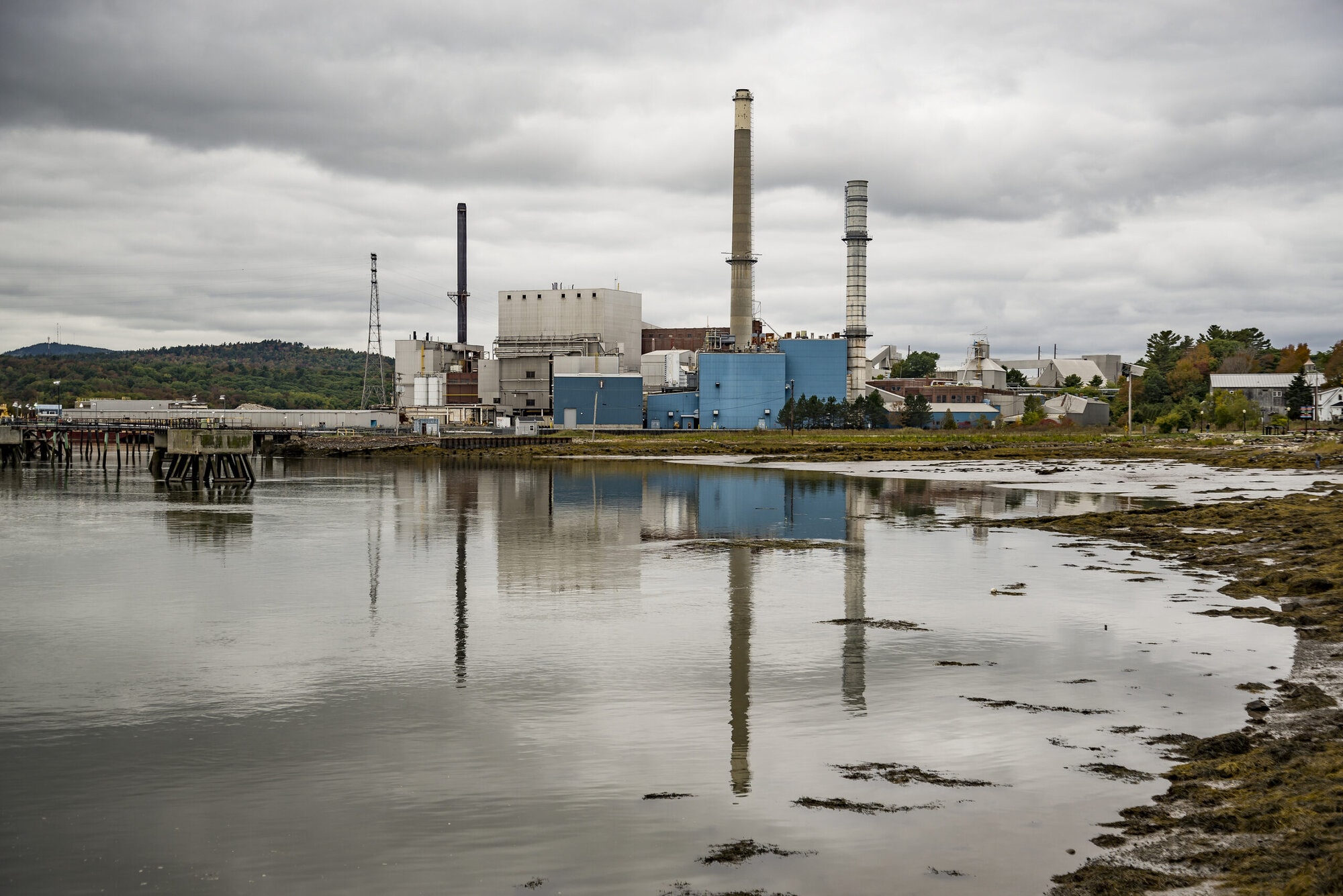New CESA Report: The Case for Replacing Fossil-Fueled Peaker Power Plants with Battery Energy Storage

The Bucksport Generation Power Station is a gas-fired peaker power plant at the site of the former Verso Paper Mill in Bucksport, Maine. Photo Credit: e.della/Bigstock.com
Fossil-fueled peaker power plants are expensive, polluting and inefficient. They are also disproportionately sited in low-income communities, communities of color, and areas already overburdened by pollution, creating equity, public health and environmental concerns. Now, a new report from the Clean Energy States Alliance (CESA) shows that battery storage can cost-effectively replace aging fossil-fueled peakers in Maine and, by extension, throughout New England.
When states pass clean energy legislation or set targets for GHG emissions reductions, they will need to assess what types of power generating resources are needed to replace fossil fuel resources as part of detailed and complex clean energy plans or roadmaps. Many states with clean energy legislation have incorporated energy storage into their plans. Battery storage can help to reduce demand on the grid during peak times, provide resiliency benefits by acting as emergency backup for residential electricity or critical facilities, and soak up excess renewable energy and then dispatch that renewable energy back onto the grid when it otherwise would not be an available source of power.
Batteries have proven to be a clean, efficient and economical alternative to fossil-fueled peakers, especially as many peakers approach retirement age and new peaking resources become needed. A recent report from CESA and consulting firm Strategen compares the economic, societal and environmental costs of new battery energy storage systems with those of new gas peakers to replace aging, soon-to-retire fossil-fueled peakers. The report is a case study of peaker plant replacement in Maine, but the results are more broadly applicable to the six states that are a part of the wholesale energy market run by Independent System Operator-New England (ISO-NE), which includes Connecticut, Maine, Massachusetts, New Hampshire, Rhode Island, and Vermont. The results may also be helpful to states in other regions, although their market rules and prices may be different.
When comparing the cost of a new fossil-fueled peaker plant to battery energy storage, many variables impact the outcome. One important variable has to do with the duration of the peaking resource. The current rules of the forward capacity market in ISO-NE require peaking resources to have a 2-hour dispatch duration. This is known as the qualifying capacity (QC) framework. ISO-NE is considering modifying its capacity accreditation rules to an effective-load-carrying capability (ELCC) framework. This change would diminish the value and payments of a 2-hour battery in favor of longer-duration resources. For this reason, CESA’s new report looks at the net costs of both 2-hour and 4-hour batteries and compares these with the net costs of a new gas peaker plant of the same capacity.
When we look at the comparison through the ELCC framework, which measures a resource’s contribution to the reliability of the grid, 4-hour BESS is significantly more cost effective than 2-hour BESS. This shows that, as the penetration of renewables and storage resources increases and market rules are adjusted accordingly, longer duration batteries will be more durable and profitable investments in the future. The 4-hour BESS is also more cost effective than the new gas peaker when environmental and societal costs of greenhouse gas emissions are considered.
In its case study of peakers in Maine, Strategen found that a portion of these aging resources are located within or near to urban areas, some of which are classified by the EPA as disadvantaged communities (DACs). The emissions produced by existing fossil-fueled peaker plants cause negative environmental and human health impacts in the surrounding communities. The most common pollutants emitted are NOX, SOX, CO2. These pollutants contribute to global warming and cause respiratory problems, especially in children and people with asthma. Retiring these aging and inefficient peaker plants, and replacing them with clean energy storage, would offer a multitude of benefits including reducing reliance on fossil fuel resources, substantial health and environmental benefits for communities, and supporting the state’s decarbonization goals.
Taking into account all the variables, the analysis shows that new 4-hour battery storage would be the most economic, equitable and environmentally beneficial replacement for soon-to-retire fossil-fueled peakers in Maine. This table shows the net cost comparison of potential replacement technologies under both the QC and ELCC market rules, with the societal costs of air emissions included in the calculations.

While this case study applies specifically to states within ISO-NE, there are important takeaways that can be applied much more broadly. States seeking a resilient, sustainable, and economically viable energy future should consider energy storage as a cleaner, more equitable alternative to replace dirty, inefficient fossil-fueled peaker plants.
For the full report, see https://www.cesa.org/resource-library/resource/battery-storage-peaker-plant-replacement-maine.
Published On
April 11, 2024

